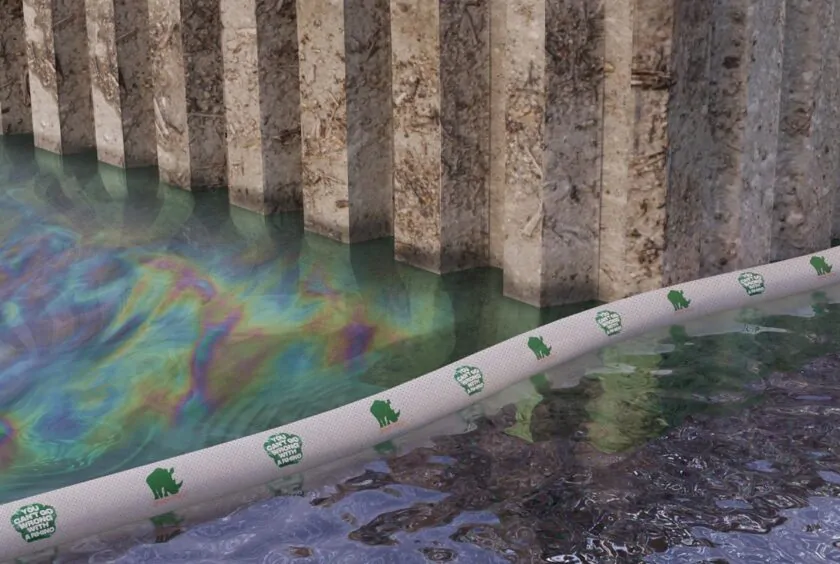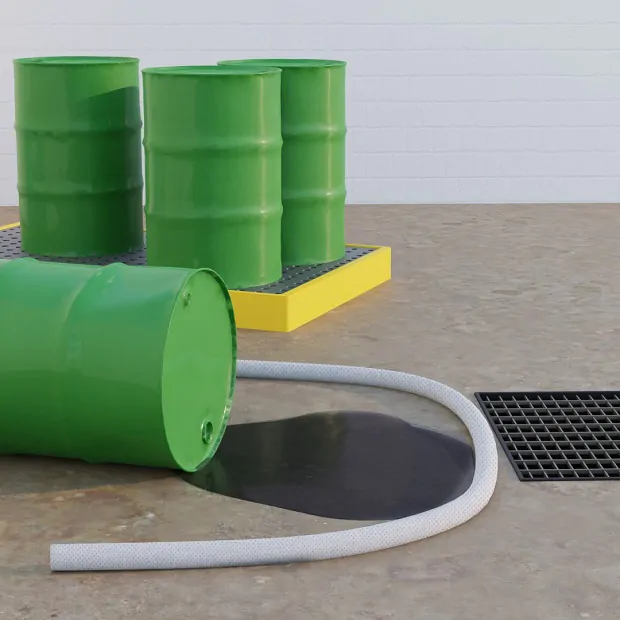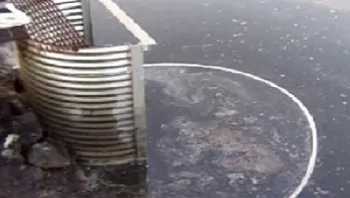How Oil-absorbent Booms Work

What are oil-absorbent booms?
Oil-absorbent booms are an essential tool for oil spill response. They can be used reactively and proactively to contain and absorb oil spills on water or land.
Booms are typically made of materials that repel water but absorb oil, allowing them to selectively absorb the spilled oil while floating on the water. Booms are available in different lengths and may be linked together.
There is a distinction to be made between booms for relatively low levels of hydrocarbon contamination, such as might occur from refuelling boats in a marina or from day-to-day construction and industrial activities, and a major marine oil spill. In this article we are talking about booms for the former.

There are two types of oil-absorbent boom:
- Quick deployment booms: these booms are used on land for reactive oil containment, limiting the spread of a hydrocarbon spill so that clean up can occur with minimal environmental damage. They are most effective on hard, flat surfaces.
- Marine booms: thicker and heavier duty, these booms are used on water to capture any contamination introduced upstream or in tidal areas. These floating barriers are primarily a proactive measure. Commonly used in marinas, harbours and on waterways close to construction work. Marine booms can usually be joined together to cover the distance required.
Materials used in oil absorbent booms
Booms are made of a perforated outer material with an oil-absorbent material inside. Most booms on the market contain polypropylene absorbents. These have their limitations which we will look at shortly. A newer type of boom, pioneered by Green Rhino, contains smart polymers which offer an all-together more effective approach.
Polypropylene absorbents are the active component of most spill response products. Polypropylene is derived from petrochemicals and is therefore oleophilic i.e. it attracts oil. However, polypropylene is effectively a sponge and, like all sponges, when it becomes saturated with oil and/or water, it will leak.
Remember that big sponge you used to have in the bath as a kid? When you held it underwater then lifted it up full of water, what happened? All the water ran out. Polypropylene sponges behave no differently.
Smart polymer booms work in a completely different and revolutionary way. Smart polymers react immediately on contact with oil and turn it onto a solid rubber-like substance. The solidified oil is locked inside the boom and can’t be flushed out by the flow of water. Even when the boom is saturated with water, the smart polymers will intercept and neutralise oil.
Which type of boom is most effective?
Smart polymer booms offer the following advantages over traditional oil-absorbent booms made of polypropylene:
- Increased effectiveness: Only smart polymer booms retain oil permanently – by solidifying it and trapping it inside the perforated membrane; none will leak out. Smart polymer booms also absorb and retain a greater volume of oil relative to their size.
- Failsafe approach: Once all the smart polymers inside the boom have reacted with oil, the boom becomes solid and acts as a barrier preventing the spread of the spill. When polypropylene booms get saturated they are prone to leak.
- Cleaner solution: When removing a smart polymer boom from water only clean water will drain out of the boom, removing the risk of secondary spills and making disposal a cleaner operation for workers. In fact, a used smart polymer boom can be wrung out to remove all absorbed water. When you remove a saturated polypropylene boom from water, both water and oil will drain out.
- Reusable solution: If there is still unactivated polymer in a used smart polymer boom, the boom can be stored and used again. As aforementioned, you can drain out any water before storage. Polypropylene booms contain liquid oil and need to be disposed of immediately as hazardous waste.
- Reduced waste: With spent smart polymer booms, the only waste is the boom itself which should be disposed of in line with hazardous waste procedures. With polypropylene booms, any water inside the boom, or draining out of the boom, also needs to be treated as contaminated waste. This increases the volume of waste and poses the problem of trying to contain it during the disposal process.
Boom deployment
Oil-absorbent booms are easy to deploy. To contain a spill on land, simply place the boom on the ground around the spill or across the path of the spill in a curved shape.

With a river or stream, position the boom across the channel downstream from the spill or potential source of contamination. Secure both ends of the boom to the bank, ensuring that water cannot flow around the boom, only underneath. If protecting a drainage outlet entering a water body, repeat the above approach but tether the boom to the bank either side of the outlet.
In open areas of water such as a marina or harbour, you may need to link a number of marine booms together to cover the distance required. You will obviously need to leave room for boats to enter and leave the area. Whilst one end of the boom can be tethered to the bank, you may need to use a buoy to anchor the other end of the boom in place.
Best practice
- It is against the law to pollute the land, waterbodies and the sea with hydrocarbons like oil and fuel.
- Oil-absorbent booms should be used proactively to protect the environment from activities that could be a source of contamination. This could be effluent from industrial premises, dewatering or surface run-off from a construction site, or refuelling locations.
- Smart polymer booms retain oil and other hydrocarbons permanently so are cleaner for the environment and workers than polypropylene booms.
- Where there is no flow of water, in a lake for example, there may be standing water with a permanent oil sheen contained by a boom. To clean this water, place smart polymer pillows on the surface to absorb the contamination. Remove when all the polymer in the pillow has been activated. Like smart polymer booms, you can wring out the water before disposal.
Summary
Oil-absorbent booms are an essential component of an oil spill response plan. It is better to have proactive measures in place before a spill happens than to have to clean up after the event. It may be too late and the fines, reputational damage and impact on the environment may be significant.
Green Rhino’s Smart Polymer Booms are more effective than polypropylene-based booms. They cost more but they do a better job of cleaning up spills, they reduce the volume of waste and are reusable until they have reached capacity.
Learn more about Green Rhino’s Smart Polymer Oil Retention Booms
